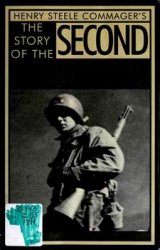The presentation of the areas of urban manufacturing and retailing discussed in this chapter is organized according to several main dimensions that were common to both Roman and Chinese urban economic structures. These dimensions are the layout, location, and distribution of workshops and markets in the capitals, the scale and ownership of premises, and the degree of state involvement in the selected businesses. I will now consider these dimensions of analysis together, addressing how the production of space operated in Rome and Chang'an and focusing particularly on the role of the state in such processes. Both governments influenced not only the cycle of manufacture and sale of the products under study, but also the physical forms and locations of the urban structures connected to it, playing an important role in the production of space in the capitals. The extent of their impact can be estimated through a broader reading of the morphology and location of the markets and workshops of the capitals.
RetaIl Space, Morphology, and Location
The first and most immediate visual sign oF the influence of the state on the economic structures is to be found in the design of the official market buildings. Fixed marketplaces in both Rome and Chang'an were state-built monumental constructions located in relatively
Central areas of the urban landscape. While in Chang'an it does not appear thaT the two main East and West Markets changed their form, size, or position of close proximity to the main imperial citadel in the course of their lifespans, markets in Rome underwent several changes. Such transformations, which mainly concerned their location and layout, showed a parallel evolution in the production of space and of the role of the city and its institutions, from powerful urban center to capital of an empire. The additional construction of market buildings during the Principate further reflects the increased economic necessities of a city that had become a real metropolis.
COMPARING EAST AND WEST
The Han marketplaces were also subjected to a higher level of governmental control than can be observed for their Roman counterparts. This can be evinced from the existence of walls surrounding the East and West Markets in Chang'an, gates regulating access to the areas, and from the presence of an administrative ofice in the form of a tower building situated between the two compounds. Although the markets of the Han period can be considered as the only public foci of socialization and commercial exchange in the capitals, the very segregation and monumentality of their architecture must have represented a constant reminder to the emperor's subjects of their ruler's authority and justice, especially considering that the markets of Chang'an were the customary stages for public executions and punishment. On the contrary, like other public areas, Roman marketplaces did not appear to have been intended, or at least interpreted by the urban masses, as deterrents to their free use. In the Roman world, public areas were frequently appropriated by the population and adapted to their uses, and even to their entertainment, as indicated by evidence of game boards carved onto structures of the fora of provincial centers (Triilo 2011:312-331). There have also been recent studies that hinted at the possibility thaT the Basilica Aemilia in the Roman Forum could have doubled up from its commercial role to nothing less than a casino (Ertel and Freyburger 2007). This flexibility in the use of urban spaces in Rome contrasts with the strict control the Han exercised over the producTion of space and use of urban structures.
Manufacture Space, Distribution, and Scale
Aside from the state-constructed market buildings, a broad look at the distribution and scale of the facilities for the manufacture and
Sale of bricks and metal objects can offer pointers to understanding their connections to the central government. In general terms, the majority of workshops manufacturing bricks and metal implements investigated so far in Chang'an were located in the northern part of the city and within the market wards. This was because of a combination of practical and administrative reasons, such as ease of access to the routes of transportation of the raw material, and need for state control. Roman workshops were instead located throughout the capital, wherever demand arose for their services, with a predominance of units in the center of the city and along the main roads, presumably to promote their visibility and transport raw materials and final products more easily. In terms of scale of the facilities, the structures found in the urban environment were not large enough to support the idea of private or state-run large-scale production for export or wholesale. Workshops were mainly smaller units catering to the potentially high demands of the urban rulers, elites, and the common people.
The analysis of the evidence for shops and workshops in Rome shows that although the government was in command of several aspects of the state economy - such as the provisioning of grain, salt, anD the extraction of metals - private entrepreneurs existed in Rome in ample number, and they belonged to all social classes, from emperor to slaves, depending on whether they were owners, employees (salaried or not), or independent workers. The existence of many private brick-making industries attested for the reign of Antoninus Pius, when a vast percentage of the brickyards of Rome and its subur-bium were concentrated into the estates of the imperial family, makes it clear that although the princeps was an extremely influential player in the Roman economy, he was nonetheless a player and not solely responsible for its state (Lo Cascio 2006:225). Regardless of the more strict state control on commercial activities in the Han capitals, private workshops appear to have been present also in China, as indicated by the interpretation of several brick-making workshops in Chang'an. This situation signifies that although the level of involvement of the government in trade and production was conspicuous, such conditions did not stifle private activities. While the government policies adopteD by the Han Empire in the economic sector emphasized the control of the authoritarian state, the Roman regulations were based on, and fostered, the existence of private property and the patron-client relationships typical of their society, with
The influence of state administration showing mostly on structures located on puBlic property.
COMPARING EAST AND WEST
Capital cities in general, and the Roman and Han ones in particular, have often been characterized by scholars as loci of concentrated consumption, veritable "consumer cities." The "consumer city" construct is built on the basis of the interpretation of the nature of the ancient economy as deined by the degree of economic reciprocity between town and hinterland. It was originally theorized by Weber and later revisited by Finley (Finley 1973; Weber 1978 [19221:12151217), and is still (often begrudgingly) considered the best heuristic device available to examine the mechanisms of the ancient economic cycle of production and consumption. Keeping in mind the somewhat limited evidence for production and consumption processes in the capitals of the Han and Roman Empires presented in this chapter, it is possible to infer that although Rome and Chang'an showed strong signs of widespread commercial and productive activities, such indings do not indicate that competitive markets drove the economy and were the main form of redistribution. The Roman and Han urban societies still gained most of their livelihood from the surrounding territories, thus making the capitals of their respective empires essentially consumer cities. In view of this, the Roman and Han urban economies appear to ind a more itting element of comparison in each other than in the modern economy.
Production of Space in the Roman and Han Imperial Capitals
The analysis undertaken in this chapter indicates that the production of space dedicated to economic activities in the Han capital was driven to a very large extent by its government, a situation that is especially evident in the enforced concentration of retail businesses and many production establishments within the enclosed wards of the marketplaces. These circumstances contrast deeply with the evidence relating to the Roman capital. The foregoing analysis of the location of production and commercial activities and the degree of state control exercised over them has, in fact, indicated the existence of a plurality of actors and social dynamics influencing the production of Rome's economic space. Despite the more scattered distribution of manufacturing establishments in Rome, certain areas of the capital appear to have attracted groups of similar trades, as attested by toponyms known from modern areas or from the classical sources.
There were Scalae Anularie, where jewelers sold rings and other trinkets; a Clivius Vitrarius for glass dealers; a Vicus Argentarius where money lenders could be found, and many areas of Rome still carry the traces in their names of the presence of clay and the facilities connected to its use (Frutaz 1962:II, plate 103, III, plates 412, 550, 552, 570, 588, 591, 615, 620). This seems to indicate that in the Roman case, although many aspects of the ancient urban economy - especially concerning trade and permanent retail architecture - were controlled by the government, some elements such as the naming of districts of the cities could have been influenced by the daily economic activities of their inhabitants. By contrast, known names for palaces, streets, and gates in Chang'an do not appear to have reflected the existence of a tight relationship between production activities and urban space. Names of urban features and locations in the Han capital were mainly reminiscent of less prosaic and more poetic ideas, like the Cassia, Brilliant, and Everlasting Palaces (Gui, Ming Guang and Wei Yang palaces), or the Gate of Peace (An Men). It was the plurality of social actors existing in Rome (not solely belonging to the highest social classes) that shaped the urban space of the capital. To put it in James Anderson's words:
The businesses and artisans gave their names, their character and ultimately their very identities to the most heavily used streets and spaces in the city, the shopping and market districts and the streets that allowed access to and from them (Anderson 1997:334).




 World History
World History









